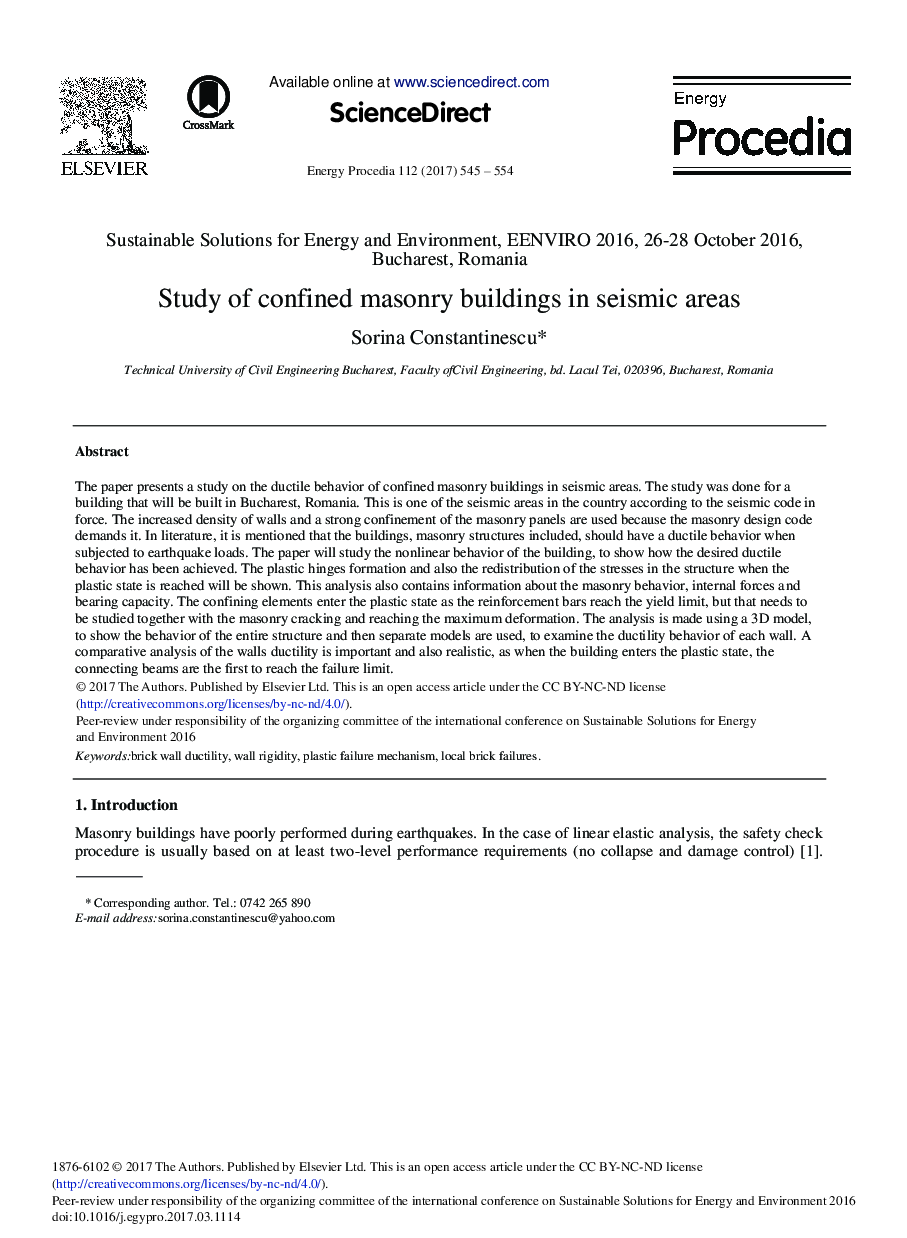| Article ID | Journal | Published Year | Pages | File Type |
|---|---|---|---|---|
| 5445863 | Energy Procedia | 2017 | 10 Pages |
Abstract
The paper presents a study on the ductile behavior of confined masonry buildings in seismic areas. The study was done for a building that will be built in Bucharest, Romania. This is one of the seismic areas in the country according to the seismic code in force. The increased density of walls and a strong confinement of the masonry panels are used because the masonry design code demands it. In literature, it is mentioned that the buildings, masonry structures included, should have a ductile behavior when subjected to earthquake loads. The paper will study the nonlinear behavior of the building, to show how the desired ductile behavior has been achieved. The plastic hinges formation and also the redistribution of the stresses in the structure when the plastic state is reached will be shown. This analysis also contains information about the masonry behavior, internal forces and bearing capacity. The confining elements enter the plastic state as the reinforcement bars reach the yield limit, but that needs to be studied together with the masonry cracking and reaching the maximum deformation. The analysis is made using a 3D model, to show the behavior of the entire structure and then separate models are used, to examine the ductility behavior of each wall. A comparative analysis of the walls ductility is important and also realistic, as when the building enters the plastic state, the connecting beams are the first to reach the failure limit.
Related Topics
Physical Sciences and Engineering
Energy
Energy (General)
Authors
Sorina Constantinescu,
